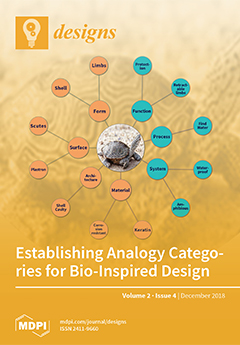Open AccessArticle
Exploring an AM-Enabled Combination-of-Functions Approach for Modular Product Design
by
Charul Chadha 1 , Kathryn A. Crowe 2, Christina L. Carmen 3 and Albert E. Patterson 4,*
, Kathryn A. Crowe 2, Christina L. Carmen 3 and Albert E. Patterson 4,*
1
Department of Aerospace Engineering, University of Illinois at Urbana-Champaign, 306 Talbot Laboratory, 104 South Wright Street, Urbana, IL 61801, USA
2
NASA Marshall Space Flight Center, Huntsville, AL 35811, USA
3
Department of Mechanical and Aerospace Engineering, University of Alabama in Huntsville, Technology Hall N274, 300 Sparkman Drive, Huntsville, AL 35899, USA
4
Department of Industrial and Enterprise Systems Engineering, University of Illinois at Urbana-Champaign, 117 Transportation Building, 104 South Mathews Avenue, Urbana, IL 61801, USA
Cited by 10 | Viewed by 7798
Abstract
This work explores an additive-manufacturing-enabled combination-of-function approach for design of modular products. AM technologies allow the design and manufacturing of nearly free-form geometry, which can be used to create more complex, multi-function or multi-feature parts. The approach presented here replaces sub-assemblies within a
[...] Read more.
This work explores an additive-manufacturing-enabled combination-of-function approach for design of modular products. AM technologies allow the design and manufacturing of nearly free-form geometry, which can be used to create more complex, multi-function or multi-feature parts. The approach presented here replaces sub-assemblies within a modular product or system with more complex consolidated parts that are designed and manufactured using AM technologies. This approach can increase the reliability of systems and products by reducing the number of interfaces, as well as allowing the optimization of the more complex parts during the design. The smaller part count and the ability of users to replace or upgrade the system or product parts on-demand should reduce user risk, life-cycle costs, and prevent obsolescence for the user of many systems. This study presents a detailed review on the current state-of-the-art in modular product design in order to demonstrate the place, need and usefulness of this AM-enabled method for systems and products that could benefit from it. A detailed case study is developed and presented to illustrate the concepts.
Full article
►▼
Show Figures




